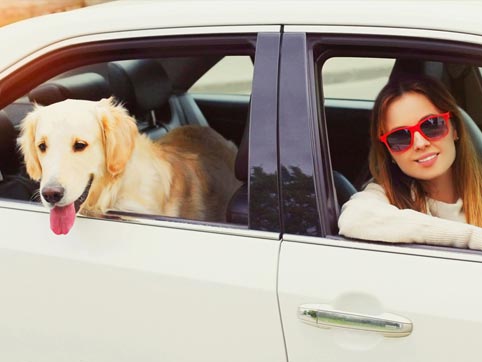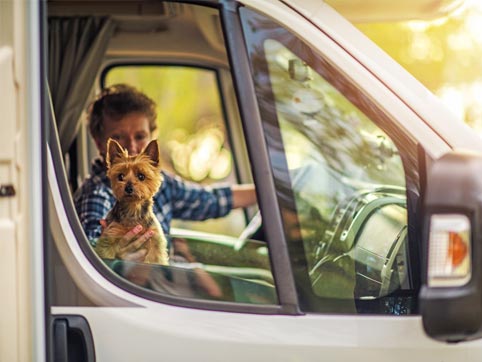
The pet market is growing with an estimated 1 in 2 households now having a pet. But what happens when those pets need vet visits, parlour appointments, and transport to shows when their owners simply can’t get there for one reason or another?
The pet taxi industry is a relatively new, but shows every sign of potential growth, and is a relatively low cost way of starting a business.
Read on for the top ten things to know about starting a pet taxi business.
1. Choose your service area wisely
You’ll need to decide the areas you service, and how far out of area you’re prepared to go, as a priority.
Keep your home location in mind, but be aware of the surrounding areas and the demographics; you want to ensure a returning customer base that can bear the prices.
You don’t have to work in your home area, but for wear and tear on vehicles and travel times, it makes sense to use it as your starting point, and work in circular segments from there.
Your service area will also decide the type of service you offer – from a no-frills budget service to luxury pet chauffeur.
2. Set up a business plan
The best way to get an overview of the costs and outgoings of any potential business is to set up a business plan.
It will help you pinpoint the market capacity, your customer base, and work as the foundation for your business.
Start-ups with a detailed business plan are a lot more likely to still be operational – and profitable – in a couple of years time.
You need to know exactly how much you need to bring in to ensure a healthy, profitable business that gives you room to grow at your own pace, and pay off any and all expenses.

3. Get Excellent Insurance
Once you take custody of the animal from your customer, you are legally responsible for both its actions and what happens to it.
Getting a great pet taxi business specific insurance frees you up to concentrate on your business. You can go about your routine knowing that you’re covered for everything from losing your keys to third party insurance.
Remember that this will be in addition to your standard car insurance.
4 . Decide what type of animals you will transport
A lot of people still think in terms of cats and dogs when talking about pets, but there is a growing segment of exotic pet ownership.
While you’re unlikely to find a pet rat at a groomers, everything from rabbits to rat snakes can and do need vet appointments. So do birds, large spiders, and fish.
Horses and ponies need frequent transportation to and from shows.
It’s up to you to decide what animals you are able to transport safely and comfortably, but don’t dismiss the more unusual species out-of-hand. Being willing and able to transport them will give you a leg up on the competition.
5. Your Vehicle is Vital
If you don’t already have a suitable vehicle for transporting animals, it’s going to be your biggest expense in starting a pet taxi business.
You need something that can have a variety of crate sizes securely fastened done if you’re going to be using a van instead of a car.
You’ll need air conditioning and heating to keep the animals comfortable no matter what the outside temperature is, and easily cleanable surfaces throughout in case one of your furry passengers gets carsick or has a nervous bladder.
Remember that you need to meet the Highway Code (Rule 57) when transporting animals, so keep a variety of seat belt harnesses, pet harnesses and dog guards if you aren’t crating the animals for transport.
Keep it well-cleaned and well-maintained – nobody will let you take their prized animals in a van that smells bad and is in poor condition.
You can get a custom paint job or vinyl wrap to advertise your business. These are slick, smart and professional, and potential customers will take note especially when you’re parked up at one of your stops.
If the budget won’t stretch that far to start with, you can also get magnetised signage that’s easily removable when you’re off duty.

6. Get Your Website Ready
The first thing a potential customer is going to do is Google you and your business.
You can either hire a web designer, or make your own site using a service like Word Press if budgeting is a concern.
Either way, make sure your site contains all the details a customer would look for:
- The area you cover
- Your operating times
- The animals you’re able to transport
- Your contact details
- Any animal-related qualifications you have
- A full list of your prices and services
If you have social media, make sure you have working links on the site.
Get testimonials from happy customers, and add them as they come in.
7. Decide your charge rate
There are a number of factors involved here.
Remember that your charges need to cover your expenses, including wear and tear on your vehicle, insurance, and petrol or diesel at the very least.
If you offer additional services, like accompanying the animal to its appointment, make a note of that and what your rate is.
Work out rates for out-of-area travel, out-of-hours travel, and cancellation fees, and make sure all of these services and rates are easily found on your website.
8. Schedule/diary Management
Create an easy-to-access and up to date schedule that lists all of your jobs on a weekly and daily basis and check it regularly.
Sticking to your schedule is vital – you want to develop the reputation of a reliable, trust-worthy service that customers can count on.
Accidently dropping calls is the fastest way to poor reviews.

9. Create a detailed passenger form
Create a form that contains all of the information you’ll need for your passenger. This should include emergency contacts, vet details, allergies, health conditions and medications, and how the animal interacts with others, human and non-human. You’ll also want the animal’s name, age, and species, plus of course the owner details – name, address, and pickup and drop-off details.
You want to make sure that you have all of the information before picking them up, so having your customers fill out a form through your website is an easy fix.
If you are running a service with multiple animals at the same time, make sure all of your passengers will get along. Driving with half your passengers trying to get to and attack the other half is a dangerous prospect.
Some animals simply won’t respond well to being in the same confined space with other animals they don’t know. It’s up to you to make sure the animals in your care are safe and unharmed, with as little stress as possible.
10. Flyers, business cards and word of mouth
See if your local vets and animal parlours will let you post flyers and business cards. Pop these up at the local doggy park and hand them out to trainers and kennels.
If you can get a contract with a busy kennel in addition to your regular customers, you’ll be off to a flying start.
Word of mouth is gold when it comes to recommendations for animals. Happy customers are likely to rave about your service to anyone who’ll listen, and pet owners talk about their animals every chance they get.
Ask your customers to post reviews online, and set up a social media presence that you update regularly.

11. Licensing and legalities
Make sure you know and understand all the legal requirements for your business. In addition to the Highway Code, you’ll need a pet transport license for trips over 65 kms.
If you do long distance journeys, make sure you have your paperwork in order, and let your customers know you have this license.
At present, pet taxis are mainly available in a handful of the larger cities. This leaves you a wide field to operate in.
Running a pet taxi could be a stand-alone business, or fit in with any number of pet-related businesses as a customer add-on; from dog kennels to groomers.
A business that offers a door-to-door bespoke service is likely to become the gold standard down the line. If you’d like to stick strictly to the pet taxi side, operating together with local vets, groomers and kennels can be a nice way to grow your business and mutually beneficial.